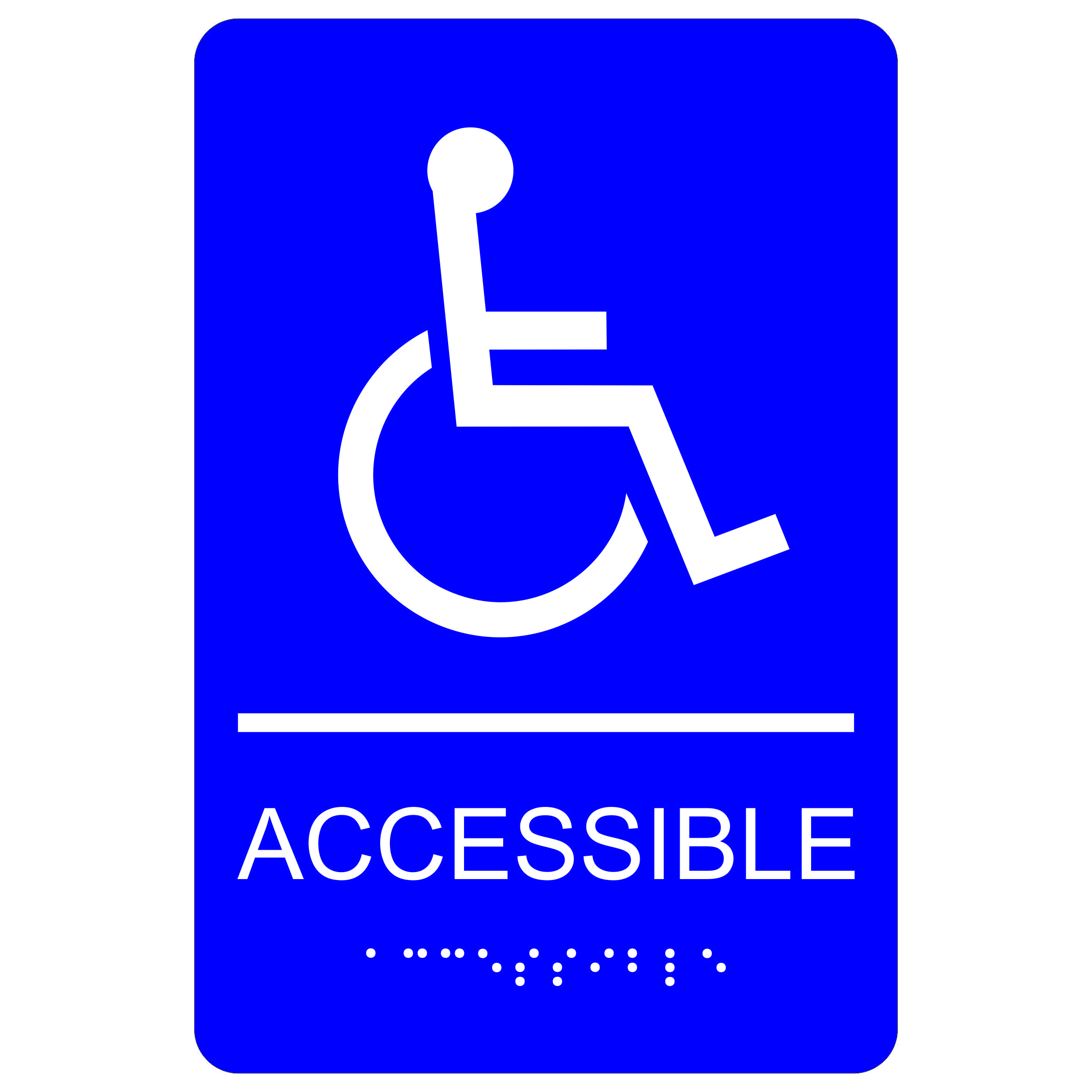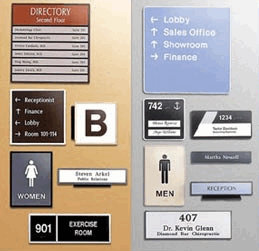The Duty of ADA Signs in Complying with Accessibility Criteria
The Duty of ADA Signs in Complying with Accessibility Criteria
Blog Article
Just How ADA Indications Change Spaces for People With Impairments
The transformation of rooms via ADA indications for people with handicaps is a profound testimony to the power of availability. By adhering to ADA conformity, atmospheres come to be safe and navigable, with indications that feature crucial aspects like high-contrast shades and Braille, thereby improving exposure and understanding.

Value of ADA Compliance
Making certain ADA compliance is not just a legal responsibility however also a societal commitment to inclusivity and availability. By adhering to the guidelines established forth in the Americans with Disabilities Act (ADA), organizations show their dedication to creating settings where individuals with handicaps can navigate and engage without obstacles. ADA conformity is critical in getting rid of discrimination, cultivating equal rights, and promoting independence for people with impairments.
Services and public organizations benefit dramatically from ADA conformity. By making sure facilities are obtainable to everyone, companies can draw in a wider client base, consisting of the 61 million Americans living with disabilities.
In addition, ADA conformity is a keystone of global layout, which highlights creating areas that suit all individuals, despite their capacities. By carrying out certified signage and attributes, companies contribute to an extra equitable culture, where all members can participate fully. Inevitably, ADA compliance transcends legal obligation, personifying a social value that prioritizes empowerment and equal chance for everyone.
Enhancing Navigation and Safety
Navigating rooms with confidence and safety is critical for people with disabilities, and ADA-compliant signs plays a pivotal function in accomplishing this objective. These indications are made with specific features to accommodate the varied needs of individuals with different disabilities, consequently facilitating smoother and much safer navigation throughout public and personal spaces. By supplying clear, standard info, ADA indicators minimize confusion and promote a better sense of self-reliance for people who rely upon them.
The calculated positioning of ADA indicators makes sure that necessary details comes to every person, consisting of those with visual, acoustic, or cognitive impairments. Tactile and Braille aspects on signs assist aesthetically damaged individuals individually find leaves, toilets, and various other vital locations. In emergency scenarios, ADA signs contribute to efficient evacuations by plainly marking fire escape and paths, therefore boosting safety and security for all owners.
Furthermore, ADA-compliant signs promote a comprehensive atmosphere by attending to the special navigating obstacles dealt with by individuals with specials needs. This not just aids in their individual safety and security however additionally encourages engagement in social activities by promoting equal accessibility to civil services and facilities. Ultimately, efficient ADA signage transforms rooms into obtainable, safe, and welcoming atmospheres for everybody.
Attributes of Effective ADA Indicators
To create efficient ADA indicators, it is crucial to integrate specific attributes that address the varied accessibility requirements of people with disabilities. One crucial function is the usage of high-contrast shades, which substantially enhance exposure for people useful content with aesthetic impairments.
An additional important function is responsive components, such as increased personalities and Braille, facilitating gain access to for aesthetically damaged people. The elevated personalities should be at the very least 1/32 inch over the surface area, permitting for easy touch analysis. Braille ought to be positioned directly below equivalent text, making sure uniformity this page and convenience of navigation.
The positioning of ADA indicators is likewise important for their effectiveness. By integrating these attributes, ADA signs can considerably enhance wayfinding and access for all.
Influence on Neighborhood Addition
ADA indications considerably contribute to area inclusion by making certain that public spaces are accessible and available for people with impairments. These signs, created in conformity with the Americans with Disabilities Act (ADA), function tactile components, braille, and high-contrast shades, assisting not only those with aesthetic disabilities but a diverse variety of handicaps - ADA Signs. Therefore, they play a pivotal function in developing atmospheres where people with specials needs can get involved fully and independently in area life

Furthermore, ADA signs assist establishments and organizations fulfill lawful obligations, thereby avoiding prospective discrimination claims and enhancing their credibilities as comprehensive entities. Ultimately, ADA indications are essential tools in the ongoing initiative to build more fair and accessible areas for every person.
Future Trends in Accessible Signage
The combination of cutting-edge innovations assures to change just how people with handicaps moved here interact with their atmospheres. Electronic indicators equipped with sensors and connectivity can interact with personal devices to supply tailored details, such as text-to-speech for aesthetically damaged users or simplified graphics for those with cognitive impairments.
Increased truth (AR) likewise holds considerable possibility. AR applications can overlay electronic details onto real-world atmospheres, offering users with improved navigational aids and contextual info (ADA Signs). This can be specifically useful in complicated setups like airports or huge public places where traditional signage may fail
An additional arising pattern is the unification of Web of Things (IoT) innovation to develop a network of interconnected signs. This allows for real-time updates and boosted ease of access, adapting to changes in the setting or customer requirements. Furthermore, with the growing emphasis on inclusivity, future policies may push for much more sophisticated signage services, guaranteeing universal accessibility and fostering a more comprehensive culture for all individuals.
Conclusion
ADA indications play a critical duty in changing rooms for people with handicaps by guaranteeing accessibility and advertising freedom. Compliance with ADA criteria enhances navigation and safety and security through the usage of high-contrast colors, responsive elements, and Braille.
The improvement of areas with ADA indicators for people with impairments is an extensive testament to the power of accessibility.To produce reliable ADA indicators, it is imperative to integrate certain functions that attend to the varied accessibility requirements of people with disabilities.ADA signs substantially add to neighborhood incorporation by ensuring that public spaces are accessible and available for individuals with specials needs.By facilitating the convenience of motion and understanding within public spaces, ADA indications promote a feeling of belonging and empowerment amongst individuals with disabilities.ADA signs play a vital role in changing areas for individuals with impairments by making sure accessibility and promoting independence.
Report this page